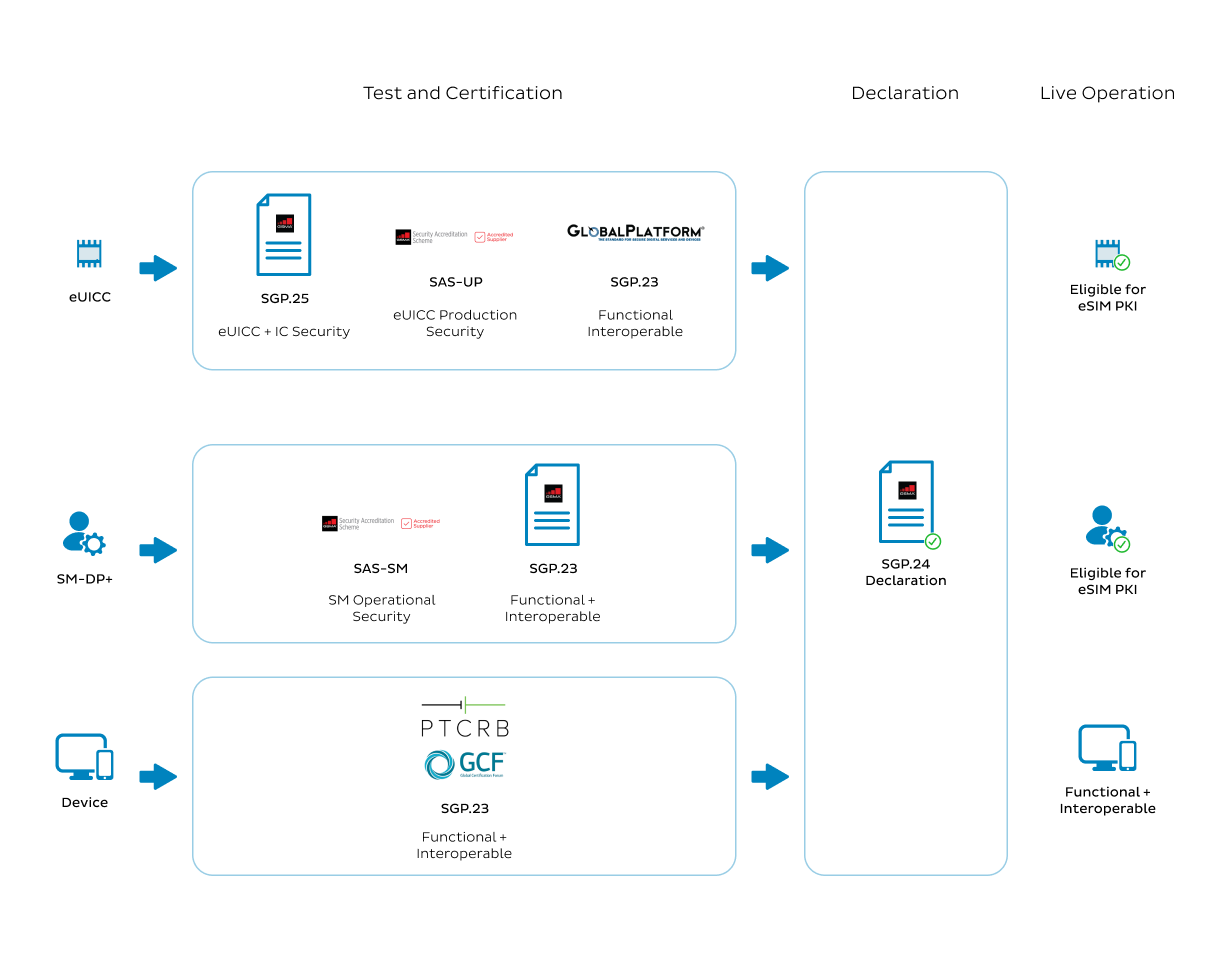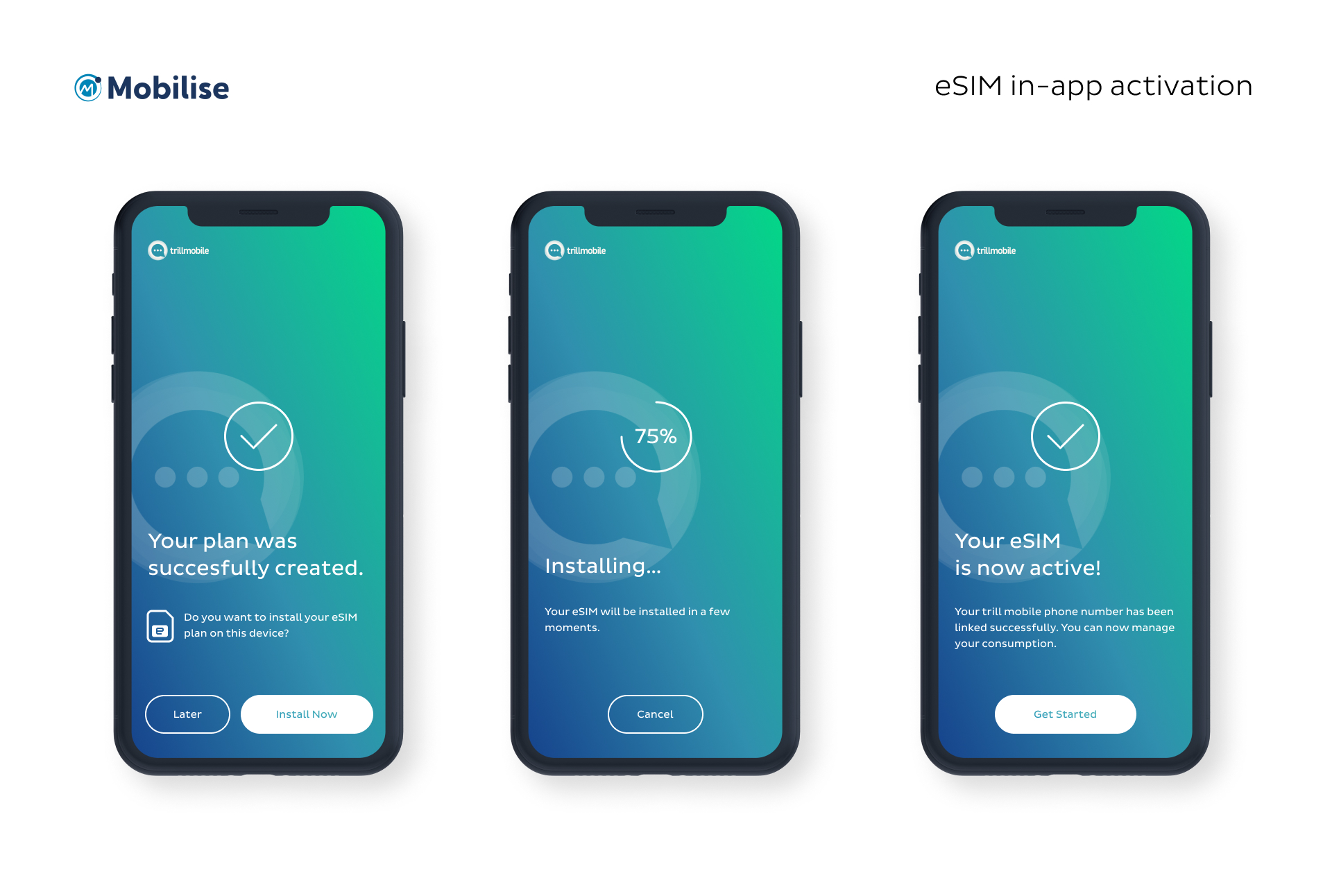Momentum for embedded SIMs, or eSIMs, is accelerating in the consumer market. The latest data from GSMA suggests that 88% of operators globally plan to offer eSIM services by 2023. And 98% by 2025. These facts alone would make anybody assume eSIM adoption has been virtually problem-free. However, despite significant breakthroughs, the market has experienced its fair share of stagnation. But this will all change thanks to the eSIM-only iPhone 14 release. In this article, we will focus on the main eSIM challenges and explain why mass eSIM adoption is still at the start of its journey.
GSMA certification
There is little doubt that consumer eSIM is arriving. But there is some conjecture about when it will become mainstream in the telco space. As with any new technology, adoption doesn’t come without its challenges. In fact, several barriers may cause service provider (SP) reluctance. And one of the eSIM challenges lies with certification.
 Adapted from: GSMA
Adapted from: GSMA
Any operator that wishes to enable eSIM capability needs to, as per the Global System for Mobile Communications (GSMA), acquire a network element called Subscriber System (SM-DP+) to manage and activate eSIM profiles. Furthermore, the network element also requires certification from the GSMA as per the SGP.24 Compliance Process. It ensures that the SM-DP+ are compliant with GSMA security requirements.
The certification process can be long and complex, often lasting up to a year. This has resulted in a limited list of certified Subscriber Management providers globally. Some are Telco Service provider giants that aren’t looking to share their capabilities just yet. Others include vendors in the Internet of Things (IoT) segment. However, they tend to have little interest in adopting solutions for the consumer segment.
As a result, the industry is seeing a gap between supply and demand, making it harder for smaller mobile operators to enable eSIM capability.
A regulated process with app marketplaces
The GSMA wants to ensure that eSIM provisioning via mobile applications can only be offered by the apps released by the service provider themselves. To achieve this, the GSMA worked together with the app marketplaces – Google Play and App Store. And they have regulated the process for app developers to have the capability to provision the eSIM via a mobile app.
The way mobile app marketplaces enforced this process is by allowing mobile applications to provide an eSIM via device APIs called LPA (standardised by the GSMA). But only if they can prove that they are in agreement with the Subscriber Management System and/or the Mobile Operator to sell/and activate eSIMs.
The way this is implemented differs between the two mobile system operators. But the resulting process is complicated, and lengthy, and offers little support or guidance to the developers. It is what you would expect from a collaboration between an overly standardised organisation (the GSMA) and two too-big-to-care software organisations (Apple and Google).
Complicated digital-network integration
For mobile service providers to truly capitalise on the eSIM capability and deliver a seamless digital user experience, they need a digitally focused Business Support System (BSS) that can offer real-time provisioning, eSIM management, payment processing and service activation. Those are tasks that SPs have been accustomed to carrying out in minutes, if not days, and now they need to squeeze them into a second.
One might think this shouldn’t be a problem for SPs that process thousands of concurrent data and voice sessions every second. But in reality, the systems were never designed to process and manage service provisioning in real time. This is because the need was never there. And to turn this around would require, in most cases, a costly digital transformation exercise which can be prohibitive to most SME (small and medium-sized enterprise) SPs that are already struggling with shrinking margins and increasing competition.
Solution – eSIM as a Service
Larger SPs have the resources, technology, relationships and negotiating power to navigate through and eventually overcome the consumer eSIM challenges. They only require a clear vision and determination to invest their time and resources accordingly.
SME SPs could, however, be dwarfed by those challenges. From digital transformation budgets to sourcing the eSIM technology from the eSIM network providers, not to mention getting support from the mobile app marketplaces.
Mobilise offers a shortcut for SME SPs to overcome those challenges.
We have encapsulated all the capabilities of our HERO platform and expertise in the telecom industry to enable SPs to launch a successful consumer eSIM offering quickly, efficiently and without the need for complex integrations. We call it eSIM as a Service. It consists of:

Platform
Designed to offer a seamless and intuitive digital user experience. Our digital platform is powered by a flexible and agile orchestration layer. Which manages the new and complex eSIM business rules. These include new eSIM workflows, telco network integrations, eSIM security requirements as well as stock management.
Knowledge
We acquired the necessary knowledge to build a framework. It is designed to engage with the mobile app marketplaces and facilitate and accelerate mobile application integration and approval processes.
Network partnership
We partnered up with a GSMA-accredited eSIM network provider. And now offer an end-to-end consumer eSIM as a service solution.
Conclusion
The age of eSIM is here. Mass eSIM adoption is only at the beginning of its journey. Especially with SMEs, it may seem like the eSIM challenges may cause hesitation. Fear of its benefits, regulation and a lack of easy integration technology can all make adopting the technology seem out of reach. However, with the right support in place, providers of all sizes can succeed in the era of eSIM.
Contact us if you’d like to find out more and have a look at what eSIM as a Service can do for you.



